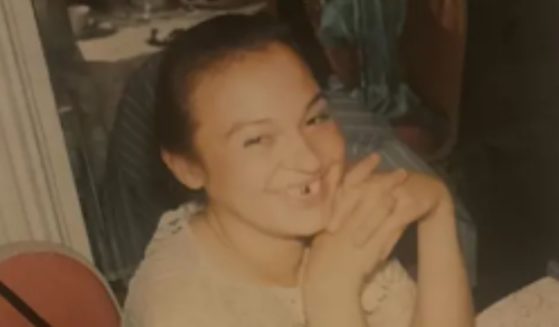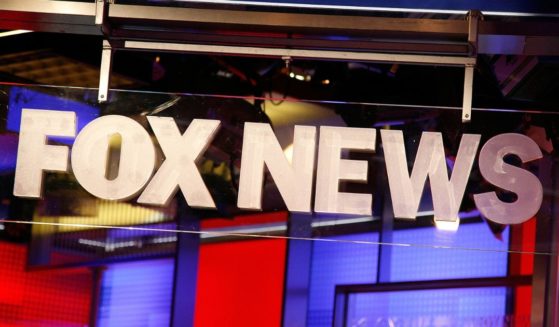Over 20% of Mail-In Ballots Rejected in Single Primary, Proving Vote-by-Mail Would Be Total Chaos
On Tuesday, the winners of two hotly contested New York Democratic primary races for Congress were announced.
Ritchie Torres, a progressive 32-year-old newcomer, won a 12-way race for an open seat in the Bronx. Meanwhile, in a close race for another seat in New York City, establishment candidate Rep. Carolyn Maloney narrowly defeated a challenger from her left, Suraj Patel. Both are in safe Democrat districts and both nominees will easily win in November.
There’s not really much unusual about this — until you consider that the primary happened on June 23.
The delay wasn’t entirely because the races were close. While Maloney and Patel ended up with a little more than 1 percentage point separating them, Torres’ margin of victory was over 10 percent. Rather, judging by The New York Times report, the problem was the tragicomic failure of the vote-by-mail system in New York state and what it means for November.
Proponents of universal mail-in voting got another reality check Wednesday when New York City’s Board of Elections released figures regarding how ballots for the presidential primary were handled.
According to the New York Post, more than 84,000 mail-in ballots were disqualified in the June 23 primary — more than 20 percent.
There was a deluge of mail-in ballots in New York City after New York Gov. Andrew Cuomo’s executive order making it easier to vote mail-in or absentee — even providing prepaid envelopes for voters. This meant there were plenty of ballots cast — and plenty of votes invalidated.
The Board of Elections figures showed that 403,103 ballots were received, but only 318,995 counted, a difference of 84,108, the New York Post reported.
So, what went wrong?
First, there were the ballots without a postmark. There were the ballots that were mailed out late. There were the ballots received late. There were problems with processing by the Board of Elections.
According to The New York Times, election officials also blamed a court decision to reinstate the presidential primary in New York.
The race was originally dropped, given former Vice President Joe Biden’s lead in the Democratic delegate race and the exigencies caused by the coronavirus crisis, but supporters of Vermont Sen. Bernie Sanders argued the delegates from New York state could give Sanders’ supporters clout to influence the party platform. (As well they have; a big story on convention week will likely be the hundreds of Sanders delegates who, according to Politico, have signed on to a pledge to not support any Democratic platform that doesn’t include “Medicare for all,” a move that could spoil the comity even at a mostly virtual convention.)
And then there was the butterfly ballot of the 2020 New York Democratic primary, the required signature on the envelope that came inside the mail-in ballot, something a lawyer representing candidates who sued the Board of Elections and Postal Service attributes to how it was put together.
According to the Post, attorney Arthur Schwartz, a Sanders supporter, said “scores” of ballots were invalidated because voters had failed to sign the interior envelope.
“The envelope with directions for the signature was so poorly designed,” Schwartz told the Post.
“A 26 percent invalidation rate is astounding. It’s very troubling.”
It’s unclear from context whether he was talking about the number from the city and made a mistake (the city total was 21 percent, thus a mistake) or if he was talking about Brooklyn’s number (roughly 25 percent), or the number of invalidated ballots for the candidates he was representing.
As for the “very troubling” part: Yes, I would say so. That’s accurate no matter what.
New York City’s fiasco was a forecast of the problems that could await us in a little over a dozen weeks. Even though the races in question are ostensibly decided, Judge Analisa Torres of Federal District Court in Manhattan ruled Monday more absentee ballots must be counted, according to the Post.
According to The New York Times, only ballots that were received before June 23 were supposed to be counted. Torres ruled that ballots received by June 24 should be counted by the Board of Elections no matter when they were postmarked and ballots received on June 25 should be counted if they were postmarked by June 23.
This ruling on its own doesn’t affect much. In the Maloney-Patel race — the only affected contest that’s statistically close — only a small portion of the 12,500 disputed ballots would be counted. The Times described the number as “at least 1,000.” Patel is down by 3,700.
But here’s the thing: Patel is suing for more ballots to be counted, according to CNN, while the Board of Elections is appealing the original decision that would require it to count any more ballots.
“This is no longer a Democratic or a Republican fight, this is not an establishment versus progressive fight,” Patel said after Monday’s decision, according to The Times. “This is now a fight for the voting rights of millions in a pandemic.”
No, it’s a canary in a coal mine — something that Rep. Maloney inadvertently pointed out in a statement that didn’t criticize the decision but called on Patel to concede.
“It is regrettable that my former opponent has become President Trump’s mouthpiece in disparaging mail voting by making unsupported claims of many thousands of ballots being invalidated,” Maloney said, according to The Times. “The true facts show a smaller number that had no effect on the results.”
Of course, two candidates locked in a bitter race like this are going to say divergent things. In fact, part of any campaign is that candidates view raw data as ink-blot tests. With the outcome of elections, it becomes ink-blot tests that are played out in court. Patel sees disenfranchisement and the (admittedly slim) potential for a victory. Maloney sees needless litigation that makes President Donald Trump look good. The Board of Elections, meanwhile, feels its procedures were sufficient. Those suing disagree.
This is a battle in one city over a primary where it took six weeks to announce several winners and only one race is remotely in question — and the parties are still court. This November, the entire country votes in arguably the most consequential presidential election in our lifetimes. What do you think the courts are going to look like then?
Despite the mess, New York City Mayor Bill de Blasio thinks his city’s Board of Elections will shape itself up in time for the presidential race.
“I am certain they can learn from this and be prepared for the general election,” de Blasio said, according to the New York Post. “Three months is a long time.
“There are whole states in this country that do everything with mail-in [voting] and it works perfectly well.”
There are actually very few that do it that way, but that’s beside the point. Cuomo issued his executive order extending mail-in voting almost two months to the day before the June 23 primary, a primary in which few races were key.
In America’s largest city, this is how prepared they were. One out of five people who voted had their ballots invalidated. That’s one out of five people whose vote didn’t count.
In three months, de Blasio is confident a much larger, much closer election can be handled via universal vote-by-mail — in his city and, presumably, the rest of the country. I don’t know what’s given him this impression, particularly since his city just managed to be an object lesson in the chaos we’re inviting upon ourselves.
Truth and Accuracy
We are committed to truth and accuracy in all of our journalism. Read our editorial standards.
Advertise with The Western Journal and reach millions of highly engaged readers, while supporting our work. Advertise Today.












